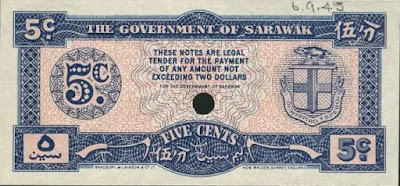Coloured Sterling Silver Commemorative Coin (proof)
The coin weighs 31 grams and is made of sterling silver with 92.5 purity. It has a face value of RM10 and will be sold at RM253 a piece. The mintage quantity is 1,000 pieces.
Nordic Gold Brilliant Uncirculated (B.U.) Commemorative Coin
This coin weighs 8.5 grams and is made of copper and several other metals. It has a face value of RM1 and will be sold at RM13.20 a piece. The mintage quantity is 10,000 pieces.
Obverse
The text "50 TAHUN LEMBAGA KEMAJUAN IKAN MALAYSIA” is shown on the left circumference of the coins.
The image on the coins features an aerial view of a fisherman pulling his net. Filled with fresh fish from the blue sea (coloured sterling silver coins only), it symbolises his skills and experience and the bounty of Malaysia's water.
Reverse
The text "BANK NEGARA MALAYSIA”, as the issuing authority of these numismatic coins, is shown on the top circumference of the coin, with the official logo of LKIM's golden jubilee featured immediately below in the centre. The bottom segment features a 3D wave sculpture motif, symbolising the challenges and opportunities faced by the fishing industry. The text of "10 RINGGIT” and "1 RINGGIT” as the face value of the coins are shown at the bottom circumference.
Technical Specifications
Category | Metal | Alloy | Face Value (RM) | Diameter | Weight | Mintage Quantity(pcs/ set) | Price (RM) |
|---|---|---|---|---|---|---|---|
Single | Coloured Sterling Silver (proof) | Ag 92.5 | 10 | 40.7 | 31 | 1,000 | 253 |
Nordic Gold (B.U.) | Cu89 Zn5 Al5 Sn1 | 1 | 30 | 8.5 | 10,000 | 13.20 | |
Set of 2 | Coloured Sterling Silver (proof) and Nordic Gold (proof) | Ag 92.5 and Cu89 Zn5 Al5 Sn1 | 10 and 1 | 40.7 and 30 | 31 and 8.5 | 1,000 | 308 |





































